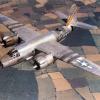Brake Education Part Deux
-
Members Online
- TangoTango
- Lois
- Z W
- raymondscott0321
- DXB
- Ragsf15e
- cliffy
- Parker_Woodruff
- Larry
- aviatoreb
- Fly Boomer
- 201er
- Marc_B
- AH64Bennett
- ETXflyboy_f14
- Slick Nick
- hammdo
- ijs12fly
- Echo
- Sabremech
- N201MKTurbo
- GRM321
- hubcap
- Gilt
- ChuckSchneider
- skykrawler
- UteM20F
- exM20K
- AH-1 Cobra Pilot
- PeterRus
- MJHarm
- Schllc
- Mreed420
- markgrue
- banjo
- Becca
- richardbrochu27
- Cfidave


Recommended Posts
Join the conversation
You can post now and register later. If you have an account, sign in now to post with your account.